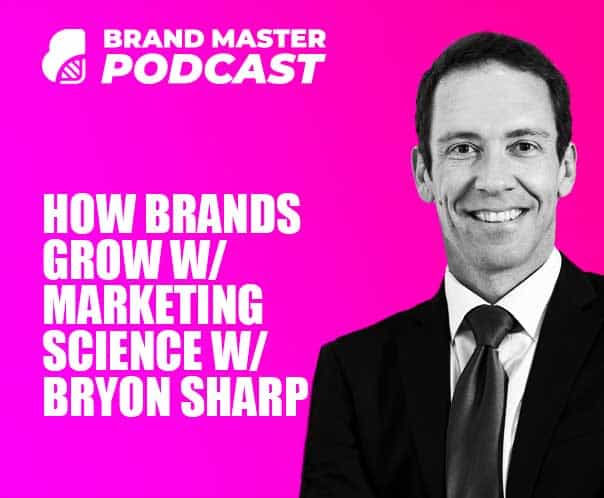So many businesses fall into the “easy road branding trap”.
Get yourself a well-designed logo & visual identity. Get your website up, run traffic to your product and you’re in business.
It’s a trap because this isn’t branding.
Developing visual brand assets can be categorised as “branding”, though it’s only a very small slice of a much bigger pie.
Branding is about making a business the most appealing choice the intended audience to ultimately influence their buying decisions.
To do this affectively you need a guiding compass, so in this article I’m going to show you 16 of the most critical branding principles to live by.
Be Different, Not Better

The most successful and the most loved brands in the world are not necessarily the best, but they’re almost always unique.
They do things differently to the rest. They speak with a unique tone of voice, they provide a different brand experience or live by a unique philosophy.
Most businesses focus too much of their time, effort and attention trying to find ways to be “better” and even if they achieve it, it most often doesn’t have the value that the effort warrants.
“Better” is more if the same but “different” is something. Ultimately, “Different” is better than “Better”.
Specificity & Relevance Wins

There are very few markets today that aren’t full of noisy competitors scrapping for the attention of their shared audiences.
Some brands attempt to speak the loudest with aggressive and constant marketing campaigns (Which is not cheap). While that’s one strategy, it’s out of reach for most brands because of the cost.
The guerrilla approach is specificity and relevance. The more specific you are about who you’re targeting and the more directly you speak to who they are, the more likely you are to resonate and influence.
PRO Brand Strategy BluePrint
Build Brands Like A Pro Brand Strategist

Story Over Product

The product is what will help the audience to achieve the end results though it’s rarely the product itself that influences the decision to buy it.
Most of our buying decisions as humans are made in our sub-conscious long before it ever reaches our consciousness so brands must communicate on a higher level to engage the emotional brand.
Story is without a doubt, one of the most effective forms of communication to engage the human mind and light up the neural connections.
So align your brand with an emotional narrative and make it stick.
Explore Brand Strategy
Programs & Tools
Connect With Your Why

Your “Why” is essentially the reason you exist beyond money.
Simon Sinek wrote a book called “Start With Why” which opened the idea to the belief that “brands don’t buy what you do they buy why you do it”.
While it’s possible to connect with your audience through your why, for most brands, internal connection with the brands why is where the real power is.
If the leadership team is clear on the brands existence and use that to guide decisions and actions, that belief can become the driver behind the brands success.
Their Challenges Are Your Gateway

What consumers say and what they do are often two distinctly different things.
When looking for a way to connect, find the subtext behind the challenge.
For Example:
If a major challenge of a consumer is “I want to cook more I just don’t have the time”, don’t jump to the lazy approach which might look like this:
“She’s Time-Poor, She values healthy eating, Let’s put a focus on our nutritional value”
How you resonate lies beyond the obvious, in the sub text which could be:
“Although she says she wants to cook more, that not what she really wants. She just doesn’t want to feel guilty for ordering take-away all the time. Let’s make her feel better about her choices.”
Address The Cognitive Dissonance

Ok, before I explain this one, let’s break down what cognitive dissonance is.
It’s when the beliefs, values or behaviours of a person contradict each other.
For example: If you hold the belief that you’re a person of your word yet you constantly fail to follow through on what you say you will, that’s cognitive dissonance right there.
Inconsistency between beliefs and actions causes friction with the law of consistency, which is our desire to be aligned with who we believe we are.
Use storytelling to tell them they are who they believe, they just need help.
Define The Enemy

Every target market shares common traits, adjectives, desires, fears and enemies.
An enemy is the most common pain-point amongst your target market.
This could be a group of people, a philosophy, a belief, an approach or anything else that stands in the way of that audience ultimately achieving that goal.
If you can pin-point the source of pain and position against it, you can resonate through a shared emotion which is a powerful technique.
Identify Their Drive

With every solution we buy, we’re either running towards something or away from something…
We run towards our desires because we want to achieve them and away from our fears because we want to avoid them.
Some consumers have an equally weighted fear and desire while others a driven more by their desires or more by their fears.
Take the time to understand what drives your audience and leverage that understanding in your position and messaging.
Positivity Wins Over Negativity

Although fear has its place in almost any brand message to highlight the enemy and agitate the problem, this is a card that needs a filter.
Any message can go either way, positive or negative.
Negative messaging highlighting fears will most certainly drive action, though we also have a super human strength to turn a blind eye to negative pain.
Where possible, err on the side of positivity. The action you drive with a positive message will motivate for longer and garner more affection.
Speak To Their Beliefs

Brand messages shouldn’t all be about pushing product.
When you focus on what they believe, you make impactful connections.
These might not provide an immediate ROI, but the connections made influences future ROI and is branding at its purest.
In the 2011 on Black Friday, Patagonia ran an ad with the title “Don’t Buy This Jacket” which forced consumers to think about the impact of their consumerism.

The spent part of their marketing budget telling customers to do the exact opposite of what marketing aims to do but in putting off short term sales, their message landed to increase brand loyalty.
Be A Step Ahead

Most businesses puts the entire focus of their product development and marketing efforts into addressing the today’s challenges of their audience.
While the challenges of today represent the low hanging fruit and short term gains, smart brands consider their customer’s future challenges.
When you know what your customer will need in 2, 5 or 10 years time, you can educate them on the impending need, nurture them towards your solution and steal a march on your competitors.
Turn Up The Tension

Tension turns up the heat and produces a gravitational pull.
When it comes to wants and needs there are many possible outcomes. A good outcome, a bad outcomes or no outcome at all.
These possibilities open the door for tension, a strong emotional weapon to pull that attention and isolate the crossroads.
Seth Godin spoke about the power of tension in his blog article “To earn our attention there needs to be tension”.
The tension of how it might turn out
The tension of possibility,
The tension of change,
This might work,
This might not work
The tension of maybe
So find the most relevant possibilities and turn up the tension.
Make Your Audience The Hero

Let’s get this one straight once and for all.
You or your brand is not the hero. It’s not the lead role coming in to save the day for the damsel in distress.
Your audience is that hero, saving the day for themselves or those around them. Your bit part as the brand is the guide to help them on their way. If you’re lucky enough for the real hero to involve you on their quest for success, your role is to help them overcome an obstacle in their path.
So turn down the “We’re amazing” soundtrack and tell a different story of success.
That of your hero customer.
Mirror Against The Opposite Strategy

In his Harvard Business Review article, Roger L. Martin highlighted a point of view that is refreshingly simple, yet a beautifully effective tool to test your strategy.
He spoke of a strategy he reviewed for a global wealth management which was “To target individuals who wanted and were willing to pay for comprehensive wealth management services by providing great customer service across the breath of their wealth management needs”.
As with all his reviews he uses a simple litmus test question:
Can the opposite of this strategy also be a strategy?
To target poor individuals who don’t want and aren’t willing to pay for comprehensive wealth management services by providing crappy customer service.
His point was this: If the opposite of your core strategy choices looks stupid, then every competitor is going to have more or less the exact same strategy as you.
Always Follow Through

Every successful brand in the world ever has been built on trust in some way shape or form.
Trust in quality, trust in service, trust in experience.
The most effective way to develop trust is to plant your flag firmly in the ground for what you want to be remembered for and follow through on that promise consistently.
That’s it. Flag in the ground. Follow through
Over To You
The build a successful brand means to find a way to get the attention of, connect with, resonate with and ultimate influence a group of people over a long period.
To do it and do it consistently you need principles to live by.
Use these as your strategy guide and your chances of actually building a successful brand multiply.
On-Demand Digital Program
Brand Master Secrets
Make the transition from hired-gun to highly valued brand strategist in less than 30 days. The systems, frameworks and tools inside this comprehensive program are all you need to level up.








